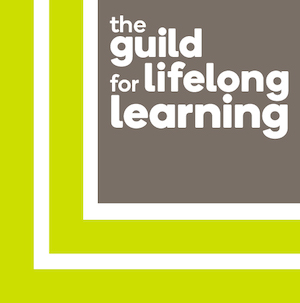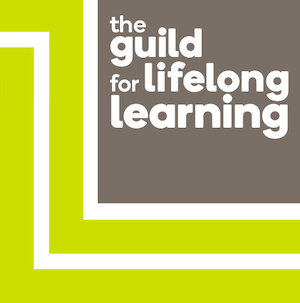All Categories > Archaeology, History & History of Art
Course synopsis
The period from the turn of the century until the Festival of Britain represents a dramatic leap forward in in developments in artistic movements in which various “groups” come together to experiment and push forward the boundaries of innovation.
There is tension between what can be described as essentially British Art and the invasion and impact of the European developments which were either influential or rejected as “not wanted on voyage” by critics and patrons alike. This was exemplified in 1910 by Roger Fry’s curated Post-Impressionist Exhibition. The reaction was both bitter and personal, “kind people called him mad, and reminded others that his wife was in an asylum.”
The period before the First World War saw new forms of painting which were fresh and exciting coming from the truly Avant Guarde young painters of the Slade School existing alongside the cul de sac development of a British/international art revolution dubbed Vorticism which disappeared in the very vortex of the coming war.
The two world wars produced an unexpected development in the utilisation of art which went beyond propaganda to recording the grim realities of conflict and the social upheavals that affected the civilians on the home front.
It is impossible to avoid the impact that the wars had upon art in the interim period, art both as a reaction to the “war to end all wars” and as a shadow lengthening over the creative world as European artists were vilified and forced to leave their country of origin and flee to Britain and later America. Bauhaus came to Britain hosted by the Modernists of Hampstead, whilst experimentation flourished in other parts of London. The coming conflict induced an evacuation to Cornwall where the relocated art community honed a new form of British Art which would resonate well into the rest of the century.
In an age of austerity, Europe was devastated and Britain was trying to rebuild a new generation of young artists who were caught up in a pursuit for a new sense of direction in which the figurative paintings of predominantly British artists, contrasted and vied with the abstraction of European and American impulses.
4 January -Session 1 “A crisis of Brilliance” - The Slade School of Art and the cutting edge.
After the fin siècle it was time for a whole new set of young people to take art forms in new directions. With a slightly older set of innovators such as Augustus John and Walter Sickert bridging the gap between 19th and 20th century, a multi-talented group of artists came from all elements of society to the Slade School of Art. East Enders mixed with Bloomsberries to create a heady froth of challenging dimensions from the badly behaved David Bomberg to the very crafted and calm Vanessa Bell. The working class Mark Gertler and Isaac Rosenberg were drawn into the company of the Woolfs, Lytton Strachey and T S Eliot.
Modernism was attacked, Vorticism vilified, and impressionism frightened the horses!
18 January - Session 2 "In which we serve” - Art goes to war twice in one century.
The First World War saw a government determined to carry out a twofold approach to war art, firstly as a record of the war and secondly to memorialise what had taken place. To achieve this, they had the courage and foresight to employ the most avant garde artists of the day such as Wyndham Lewis, Paul Nash, C.R Nevison and Stanley Spencer. At the same time the Imperial War Museum was established in 1917 to provide a focus for this national record.
In the Second World War the War Artists Advisory Committee chaired by Sir Kenneth Clark took an even more structured approach. Over 400 artists were commissioned to explore every facet of the war at home and abroad. Again, the most celebrated of artists were chosen including John Piper, Nash, Sutherland, Spencer and Moore at home, whilst such as Anthony Gross and Edward Ardizzone recorded events overseas. At the end of the war there were some 5,570 pieces of work.
No class 11 January
25 January - Session 3 “Town and Country” - Interwar from Hampstead to Newlyn – ba ba Bauhaus.
This was a very rich period of artistic development in which Art seemed to be the hope of a “never again” generation. There arose an escape to the pastoral with the work of Paul Nash and excursion into the fantastical/mystical with the esoteric forms of Stanley Spencer. It was very much post war and decorative period lending itself to the stylised name of Art Deco. There was the clean economy of line in the work of Eric Gill and for the ordinary mortals, the everyday impact of art on life of the work of Clarice Cliff. And for the middle classes of Hampstead, came the arrival of the European refugees Walter Gropius, Piet Mondrian, and Moholy-Nagy welcomed by the Modernists of archway and Hampstead to the Isokon Building on Lawn Road. Whilst this community began to fade in the shadows of the oncoming war, Barbara Hepworth, Ben Nicholson and Henry Moore moved to the country for a new perfection where art could once again reflect nature.
1 February - Session 4 Post War Austerity art - Figurative versus Abstraction and a Festival of Britain.
In the period after the war a search for a new structure emerged to some extent based on the seeds sown before the war. Henry Moore representing figurative sculpture and along with other artists such as Victor Pasmore, William Scott and Barbara Hepworth. But the new young generation of artists who had been evolving their own styles during the war exploded into the limelight with Francis Bacon’s shattering work in 1944 “three Studies for the base of a crucifixion”. A whole generation of ground-breaking figurative artists including Lucian Freud, Frank Auerbach, Leon Kossoff sparked each other. Whilst the Neo Romantics John Minton, Craxton and Sutherland moved in a more familiar format with Elizabeth Frink and L S Lowry working in forms that were very much sui generis. And to round it all off, the Government proposed a showpiece of industry and Art entitled – “The Festival of Britain”.
Book your place
| Time/Place | Price | Sessions | Quantity |
|---|

